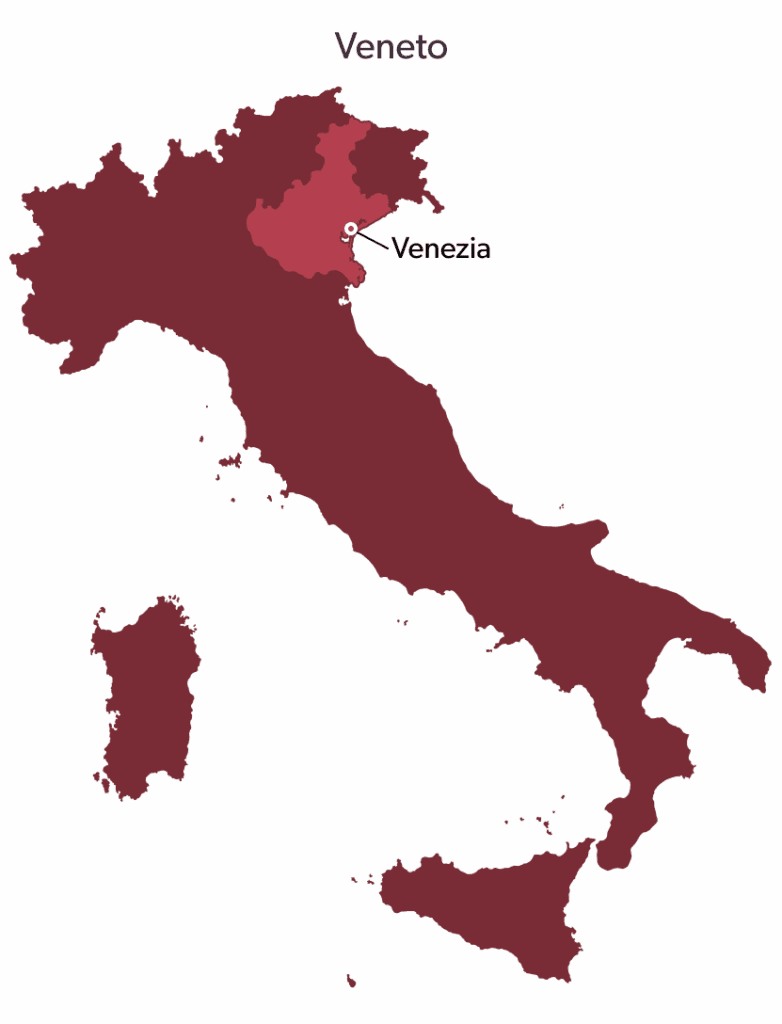In the province of Belluno, Prosecco DOC is a classic white of the region, produced with the Glera, Glera long, Verdiso, Bianchetta trevigiana, Perera, Chardonnay, Pinot Bianco, Pinot Grigio, and Pinot Nero vines, and includes sparkling and sparkling variants.
It is important to remember that Prosecco DOC is also produced in the provinces of Padua, Venice, Vicenza, Treviso as well as in the Friuli provinces of Udine, Gorizia, Pordenone, and Trieste.
Not all Prosecco wines are alike, in fact, the “Prosecco” controlled designation of origin (DOC) is reserved for wines that meet the conditions and requirements established by the product specification, for the following types:
- Prosecco tranquillo
- Prosecco frizzante
- Prosecco spumante
During the vinification phases, only loyal and constant oenological practices of the area are allowed, suitable to give the wines their peculiar quality characteristics. The winemaking practices for the vinification of DOC Prosecco include, among other things, that:
- The maximum yield of grapes into Prosecco DOC wine must not exceed 70%;
- On the labels of each type of Prosecco DOC wine, it is mandatory to report the year of production of the grapes.
BELLUNO – SURPRISING
In the Belluno area, the Prosecco DOC vineyards grow close to the Pre-Alps, creating a wonderful painting-like setting. Here the breezes that caress the grapes give freshness and aromas of great finesse. The queen of the Belluno area is Cortina, home of the next Winter Olympics, for which Prosecco DOC will be sponsor. One more opportunity to get to know these wonderful lands!
It is the Venetians and the Celts who give Belluno its current name: belo-donum, which means “Shining Hill”, before Bellunum becomes, in the 2nd century BC, a city of the Roman Empire. With the end of the Roman Empire, the city was invaded in turn by the Teutons, the Lombards, and finally the Carolingians. In the 10th century, Belluno was annexed by Venice and then by the French troops who invaded the Veneto. After the defeat of Napoleon, Belluno became part of Lombardy-Veneto under the governance of the Austrians. Finally, Belluno, together with Veneto, decided to join the Kingdom of Italy in 1866.
Today, we can admire the beauty of the city perched on high bluffs above the Piave river and backed majestically by the snow-capped Dolomites. The historical old town is one of its main attractions, mixing stunning views with Renaissance-era buildings. In Belluno, tourists can enjoy the bustling market town and the countless works of art. For example, in the heart of the city, situated in Piazza Duomo, you can admire the fifteenth-century fountain in the center of San Gioatà, which is overlooked by the buildings of the ancient city power: the Rector’s Palace, the neo-Gothic town hall, the Bishop’s Palace and the Cathedral. At the two extremes of the old town, you can admire the two main gates: the huge door to the north and the Dojona Rugo door to the south, near which is also the Captain’s Palace of Justice.
Interesting FACTS about Belluno
- Part of the Belluno territory falls within the Dolomites National Park and is encircled by greenery, touched by water, and crowned by mountains that surround the city have UNESCO World Heritage status.
- The Dolomites National Park stands out for its assortment of rare flora and fauna. With more than 1,500 types of vascular flora, the region attracts botanists from all over the world every year. The number of plant species in the park and its adjacent areas totals about a quarter of all flora in Italy. Visitors can also observe a wide range of wildlife, including many species typical of the dolomite and Alpine regions, such as hedgehogs, weasels, and alpine hares.
- Belluno’s nickname is the “Shining City” as it has its roots in Celtic times, in reference to the god of the sun, Beleno, thanks to its shimmering surroundings and beautiful colors. Discover the wonders of Belluno, whose colors constantly change with a blink of an eyelid.

